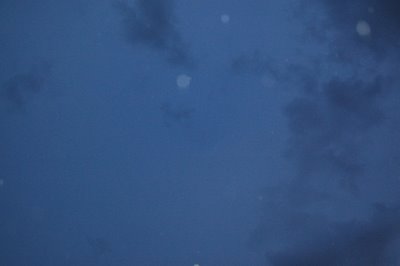Setting.
In a two-minute conversation with
Jim Fusilli at Thrillerfest, my writing changed forever. “Setting will anchor your story,” he said.
All I can think about now is setting.
Yesterday,
Toni McGee Causey posted a beautiful essay about her life growing up in Cajun Louisiana. Setting.
And this morning,
Bill Cameron responded by posting a poignant story about his nomadic life growing up following his mother’s inclinations. Setting.
But, my experience of my surroundings will never be the same as it was when I was growing up. Not since February of last year, when I suddenly and inexplicably lost most of the hearing in my left ear to have it replaced by a constant ringing sound.
Go find a piano and hit high “G.” Now imagine that note as a ringing tone in your ear. Constant. Night or day. 24/7. 365.
And medical science has no idea why, nor any clue how to fix it.
Deafness, even partial deafness, is an isolating experience. I listen to jokes, but miss a lot of punch lines. When more than two people talk at once, I can’t hear a word anyone is saying, making conversations with two or more a challenge. And at large tables of people having dinner together, I can only comfortably converse with one or two people on my right, since I can’t hear much of what anyone else is saying. Unless they shout. And that just annoys everyone.
I've never liked a lot of attention, so I don't usually tell people lest I make them feel they have to treat me like a princess. Instead, I'd rather feel stupid. And I often do. Because I know I'm missing important points in conversations.
And once in a while, I'll meet someone with a voice I simply can’t hear at all. Then I'm brave, I straighten my shoulders and take a deep breath, I boldly tell them I have a hearing problem and what it is and what it means. But people don't really understand. So, after saying "huh?" a hundred times, I'll give up and smile and nod and hope they don’t ask me something that will reveal I haven’t heard a single word they’ve said. I don't want people to think I'm not interested. I am. I just can't hear so much.
I long at times for what I once had, but I still have much to be grateful for. I have two friends who are completely deaf. They grew up deaf and know nothing else and are happily married to each other in their own silent world. They've never heard the sounds I’ve heard and they never will and they don't care. They don't think they are missing anything at all.
The world is rich with sound, and the story of sound plays an integral role in my strongest memories of the places I’ve lived.
Setting again. All i can think about right now is setting.
The sound of the ocean waves crashing rhythmically against the beaches of Long Island Sound, playing in the cold water until our lips turn blue, salt air tickling my nostrils, cool breezes against our damp skin, the setting sun turning the water a cool grey-pink. Setting.
The constant hum of a busy urban city punctuated by sirens, honking cars and the distant shouts of pedestrians, the gritty scent of New York City’s air, the dark that's never really dark because there are so many lights…I always think of New York City first at night. Setting.
The pure silence of the Arizona desert in the ‘70s, before everyone on earth started moving here. My friends and I would ride our horses out a few miles and stop in the middle of nowhere and marvel that we could hear nothing. Nothing but the sound of our horses breathing and the warm dry wind in our hair. No planes. No cars. No hum of heaters or air conditioners or anything else from the modern world. And in the middle of a hot desert day, not even a bird. Nothing.
And that is what I miss.
I still hear birds and crickets and frogs. I still hear ocean waves. I can hear the hum of a city, blues music on the radio, and if I listen really hard and overcome my fear of calling attention to myself, I can still hear a lot of what people say.
But never again will I hear the sounds of silence.
 From this morning to early afternoon, the sky turned from white to charcoal grey, the air thickened with moisture. Winds kicked up in short gusts, only to subside momentarily, like the capricious calm on the New England coast right before the North Atlantic unleashes one of her notorious nor’easters.
From this morning to early afternoon, the sky turned from white to charcoal grey, the air thickened with moisture. Winds kicked up in short gusts, only to subside momentarily, like the capricious calm on the New England coast right before the North Atlantic unleashes one of her notorious nor’easters.